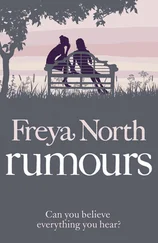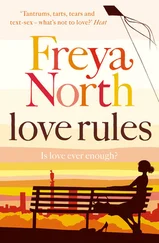While Mrs McNeil was pottering and clattering around the kitchenette, Petra browsed the room. She’d been visiting Mrs McNeil for nearly two terms. In fact, the summer holidays had just started, but it didn’t occur to Petra not to visit. It might be the school holidays but it wasn’t as if she was going on a family holiday this year. That in itself would be a contradiction in terms. It couldn’t be much of a holiday if there wasn’t much of a family. And anyway, there was something really nice about visiting out of school hours and not having the time restraints of double maths or netball or pottery at Milton College to rush away for. And, though there had been the unpleasant incident with Mrs McNeil’s bag at the bus stop the previous week, Petra would have visited Mrs McNeil today anyway: she was her companion, not her duty.
That room. That lovely room; walls awash with art of all description, surfaces heaving under the breadth of possessions accrued over decades, even the floor space reduced by that veritable library of diverse tomes. How many times had Petra been in this room? And there was still so much to look at. She loved all the trinkets and keepsakes from a history of visits to a wealth of countries and cultures; the antithesis of just the two statement pieces of Lladro that her parents had bought to embellish the mantelpiece, one of which had gone to Watford with her father. Most of all Petra loved Mrs McNeil’s pictures, some of which were prints, others originals in oil or watercolour or pastel or charcoal; some representative, others abstract, some framed, others tacked up with drawing pins. She was lost in thought, gazing at a vibrant oil painting, when Lillian came in with the tea.
‘Mrs McNeil,’ Petra said slowly, not turning around, still transfixed by the painting, ‘I’ve just got it!’
‘You shouldn’t use the word “got”, you know,’ said Lillian, ‘or “get”. It’s lazy.’
‘I mean, I’ve just figured it out!’ Petra qualified, her eyes still on the painting. Slowly, she turned, her face flushed with excitement. She walked across the room, towards Lillian and went to the watercolour of Kilimanjaro which hung by the front door and which she’d admired on her first visit. ‘This is Mount Kilimanjaro,’ she said, then walked over to the colourful abstract in oils which had so mesmerized her. ‘And this is, too!’
Lillian McNeil regarded her, steadily but expressionless. It didn’t matter to Petra.
‘All these times I’ve been here, in your home, I thought this painting was just a gorgeous colourful explosion of colours and shapes. You know, abstract art . I thought maybe it symbolized fire and light and atmosphere – a bit like Joseph Mallord William Turner who we’ve been doing in art.’ Petra stared at the picture. ‘But I didn’t realize it was real,’ she whispered. ‘Hang on – I’ve lost it!’ She fell silent. ‘Here!’ She traced her finger over the coloured shapes to denote the form. ‘It’s real, isn’t it – it’s Kilimanjaro. But to me, it looks like Kilimanjaro is on fire!’
‘It is,’ Lillian said softly, a little sadly. She paused. Then she straightened herself and smiled. ‘That painting was done over twenty-five years ago, Petra, and it appears you and I – and one other, who is no longer with us – are the only people to recognize its true subject matter. Most people think it’s a colourful pastiche of Clyfford Still.’
‘Who?’
‘You’ll learn. In art.’
‘But it isn’t.’
‘No, it isn’t. It’s by Hector McNeil. My late husband. He painted that. He painted it for me. We loved Tanzania. We lived there, happily, with Kili as our magnificent backdrop. More than a backdrop. That mountain was our everything.’
Instinctively, Petra went over to the chair in which she always sat and nodded gratefully as Lillian poured the tea. She placed the cup and saucer carefully on her knee and sipped daintily. She was sure such manners were the outcome of taking one’s tea in a bone-china cup and saucer. At home, there were only clunky Denby mugs.
‘Is the fire real or abstract?’ Petra asked. ‘Did the mountain really catch fire, when you were there?’
Lillian poured tea for herself, settled into her chair. ‘Legend has it that a great fire struck the mountain and that is what Hector’s painting celebrates. Fire needn’t necessarily destroy, Petra dear. Fire can reveal. Fire can create. Fire was the reason we came to be in Tanzania.’
Though Petra meant to sip, in her excitement it turned into a slurp. ‘Sorry,’ she said.
‘Actually, the story starts a fair few years before the fire, Petra,’ Lillian began, ‘585 million years ago to be precise, when the continents collided in the pan-African event and caused a geological phenomenon. There, you can knock your geography teacher for six when you go back to school.’
‘What was the phenomenon?’
‘A most beautiful and rare gemstone was born.’
Petra’s glance ricocheted from the watercolour of Kilimanjaro by the door, to the vibrant oil of the mountain on fire across the room.
‘Have you heard of the Masai?’ Lillian asked her.
‘Of course,’ said Petra, ‘we did them in geography last term. We watched a video and our teacher brought in real Masai beads. I wore the bangle all lesson.’
‘A Masai legend tells of how a lightning bolt struck Kilimanjaro, setting the mountain ablaze and creating a magic fire in the sky. When the flames died down, glistening amongst the ash were stones of the most amazing array of blues: royal blue, midnight blue, indigo, periwinkle, lavender, blue-violet, violet-blue, pure violet. You see, the conditions had to be right those millions of years ago for the gem to be born and then, many millennia later, conditions had to be right for its existence to be revealed.’
‘Wow,’ said Petra. ‘Is it a sort of diamond then?’
‘It’s actually a thousand times rarer than diamond, Petra. And that’s a fact.’
‘Sapphire?’
‘No – it is the colour sapphire wishes it could be.’
‘What is it?’
‘It is tanzanite.’
‘Tanzanite?’ The word was lovely on the tongue.
‘And in just a few decades or so, there will be no more tanzanite. At all. It will be gone.’
‘Gone? Forever? Why?’
‘Because the only place in the whole world where it exists is a three-mile zone in the foothills of Kilimanjaro – the Umba Valley, the area outside Arusha in the Merelani Hills.’
Petra looks up from her lap to the wall opposite her bed where the abstract oil painting of Kilimanjaro ablaze hangs. She smiles, a little sadly. Dear dear Lillian McNeil. Petra takes the tanzanite and lays it between her index and middle fingers. Even in the dim of her bedroom in the middle of the night, the stone resounds with colour and hue; deep brilliant blue one way, glimpses of vivid violet the other. She can hear Mrs McNeil’s voice, as clear as if she is sitting beside her, alive still.
‘A Masai warrior I knew told me that if you look into the heart of tanzanite and see through to its soul, you see the colour of Kilimanjaro through the morning haze – which no paint, no pigment can replicate.’

Petra looks at her clock, surprised to see it is almost two in the morning. She looks at her tanzanite. Soon enough, there will be no more tanzanite. Anywhere in the world. Diamonds are forever, tanzanite is not. And she keeps hers under her mattress. She humps the mattress on top of all the paperbacks. She checks her mobile phone. The screen is still blank. Poor old Rob. What a thing to have to work so late.
Читать дальше













